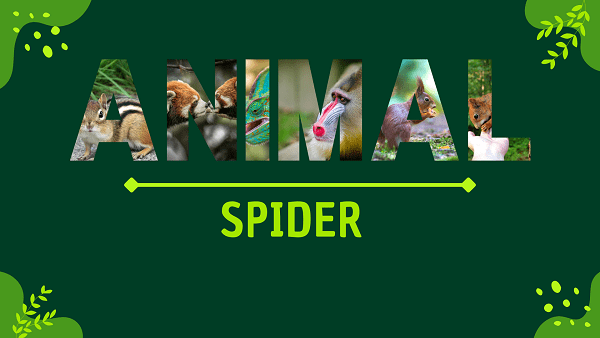Spider | Facts, Diet, Habitat & Pictures
Home » Animals » Spider | Facts, Diet, Habitat & Pictures
Spider Overview
Appearance
Spiders exhibit a distinctive appearance characterized by a segmented body with two main parts: the cephalothorax and abdomen. They typically have eight long and jointed legs, covered in fine hairs. Spider bodies often display a wide range of colors and patterns, including vibrant hues, to blend with their surroundings.
Many spiders have venomous fangs near their front, which they use to immobilize prey. These arachnids also feature multiple eyes arranged in various patterns depending on the species.
Origins And Evolution
Spiders have ancient origins dating back over 300 million years to the Carboniferous period. They evolved from arachnid ancestors and are part of the class Arachnida. Over time, spiders diversified into a wide array of species, adapting to various ecological niches.
The development of silk-producing glands was a pivotal evolutionary step, enabling them to create webs for prey capture and shelter. Spiders transitioned from a terrestrial to an aerial lifestyle, with many species adopting silk for ballooning or gliding.
The evolution of venomous fangs allowed them to subdue and digest their prey externally. This successful adaptation led to the diverse and widespread spider species we see today, inhabiting diverse ecosystems worldwide.
Behavior and Lifestyle
Spiders are renowned for their carnivorous behavior, primarily preying on insects and other small arthropods. Their lifestyle is characterized by constructing intricate silk webs for hunting and shelter. Once prey is captured in their web, spiders use venom to immobilize and digest their meal externally.
They are generally solitary creatures, with minimal social interactions, except during mating encounters. Spiders often exhibit nocturnal behavior, actively hunting and repairing their webs under the cover of darkness.
Spider Scientific Classification
- Kingdom: Animalia
- Phylum: Arthropoda
- Subphylum: Chelicerata
- Class: Arachnida
- Order: Araneae
Spider Locations
- Forests
- Grasslands
- Jungles
- Deserts
- Wetlands
- Caves
- Gardens
- Urban areas
- Mountains
- Agricultural fields
Fast Facts
- Name: Spider
- Scientific Name: Araneae order
- Habitat: Varied environments
- Diet: Insects, prey
- Physical Features: Eight legs
- Nocturnal: Night hunter
- Solitary: Often solitary
- Unique Order: Arachnida order
- Lifespan: 1-3 years
- Conservation Status: Not assessed
- Fun Facts: Silk web-spinners
Physical Characteristics
- Color: Diverse hues
- Skin Type: Exoskeleton-covered
- Top Speed: Quick crawler
- Lifespan: 1-3 years
- Weight: Lightweight arachnid
- Length: Varies widely
- Age of Sexual Maturity: Variable
- Age of Weaning: No parental care
Spider FAQs
Are all spiders venomous?
No, not all spiders are venomous. While all spiders have venom to subdue their prey, only a few species possess venom that is harmful to humans.
How do spiders create silk?
Spiders produce silk from specialized glands called spinnerets located at the rear of their abdomen.
Can all spiders spin webs?
No, not all spiders spin webs. Some actively hunt their prey without using silk webs, while others use silk for shelter rather than for trapping prey.
Are daddy longlegs (harvestmen) spiders?
No, daddy longlegs, or harvestmen, are not true spiders. They belong to a different arachnid order called Opiliones. Unlike spiders, harvestmen have one body part and lack venom glands.
Do spiders eat their mates?
In some spider species, sexual cannibalism occurs, where the female may consume the male during or after mating.
Are brown recluse spiders found everywhere in the world?
No, brown recluse spiders are primarily found in North America, particularly in the southern and central regions. They are not found worldwide.
How do you identify venomous spiders?
Identifying venomous spiders can be challenging and is best left to experts. In regions where venomous spiders are known to exist, it’s essential to educate yourself about local species and their distinguishing characteristics.
Related:
- Tarantula
- Mackerel
- Mackerel
- Sea Stars
- Bird
- Amphibians
- Vertebrates
- Sand Dollars
- Barnacles
- Scallop
- Brittle stars
- Tilapia
- Carp
- Krill
- Catfish
- Grouper
- Calm
- Yak
- Yucatan Brown Brocket
- White-tailed Deer
- Uakari
- Utahraptor (Dinosaur)
- Qinghai Lake Naked Carp
- Qilian Shrew
- Qinling Panda
- Qacha’s Nek long-fingered Frog
- Red Fox
- Red Panda
- Rockhopper Penguin
- Salamander
- Snail
- Storks


